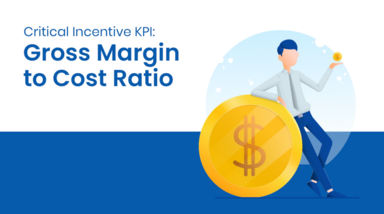Critical Incentive KPI: Gross Margin to Cost Ratio
The ultimate success of an incentive program lies in the revenue that it generates for your business. Measuring your program performance using the gross margin to cost can help you accurately gauge the ROI of your incentive programs.
Fielo has been at the front line, co-creating high-performing incentive/rebate/reward programs with our customers. In our experience tracking customers’ KPIs, it’s been observed that companies that implement quality incentive programs observe highly positive margin-to-cost ratios and receive desirable revenue returns on every penny spent.
At GN Hearing Group, effective implementation of incentive programs has led to the company registering a staggering return of $78 for each $1 spent on incentive rewards.
Similarly, at Consumer First Financial Group, with a range of incentive programs in place, our partners managed to generate revenue 25 times the spending on incentive rewards.
Clearly, when structured and run effectively, incentive programs hold the potential to generate significantly positive revenue-to-rewards ROI. Forging relationships with channel partners is no longer just a ‘good to have’ for growth-driven businesses. It is a powerful method to tap into new markets and open untapped revenue streams.
But how do companies like GN Hearing and Consumer First Financial manage to maintain such a high gross margin-to-cost ratio? What are the key activities that lead to these outsized returns?
Advertising the incentive program
Let’s face it, it’s unlikely that your channel partners are only collaborating with you. Your partner organizations might work with multiple companies, but they’re not equal contributors with respect to their sales. With incentive programs, it is essential to acquire a top-of-mind space with channel partners and highlight the benefits on offer.
Advertising your incentive programs help you do just that. Actively promoting your incentive programs gives you a strategic advantage over other companies – so whether they are training their teams or prioritizing products, your product is the one your channel will focus on.
Offering details that help channel partners understand what lies in store for them motivates them to participate and sell more, effectively contributing to your margin. An incentive program that is easy to understand is more likely to be opted in to by the partners.
Optimizing the incentive spends
Optimizing channel incentive spending involves a more rigorous data-driven approach than organizations realize. An incentive program requires careful monitoring and effective optimization to yield the best results.
Channel managers should know exactly which parts of the incentive program are driving business and increasing your margin to cost. Know which specific incentives are driving outsized returns and replicate them across the program. This approach can help you significantly drive up margins and keep your costs lower.
Over 60% of the revenue that comes through indirect channels can be contributed by the top quintile (20%) of channel partners. Better incentive data helps you motivate the remaining 80% of partners as well. If you know what incentives are contributing the most to your margin-to-cost ratio, optimizing your spending becomes straightforward.
Personalizing channel incentives
Different partners require different motivators. Therefore, your incentive program cannot be built on a one-size-fits-all model.
With channel partners working with multiple companies simultaneously, the vendor/manufacturer-to-partner dynamic is becoming increasingly similar to that of vendor/manufacturer-consumer in terms of personalization and experience. Since this dynamic is evolving, offering the same rewards to all channel partners won’t generate the same results. Partners are likely to be motivated more if your rewards meet their goals and requirements.
Offering personalized incentives works well as a general rule but becomes absolutely imperative if you are unaware of the culture your channel sales force breathes in.
Expecting the same rewards to infuse equal motivation into all partners cannot work in this changing and volatile market. Also, offering exciting and custom rewards can help companies accomplish things like:
- Acquire the mindshare of channel partners
- Establish active communication channels with partners
- Set higher targets for your partners
Knowing what KPIs to focus on is as important as determining what incentives to offer. Instead of vanity metrics, companies that focus on profitability drivers and actual ROI tend to be proactive at taking preventive measures and avoiding losses. Gross Margin-to-Cost Ratio is one KPI that helps you correctly determine the contribution of a channel to your revenue. And eventually, it helps you make the most of your channel incentive programs.
You may also like:
We, at Fielo, ensure that organizations get the best returns out of their incentive programs. Need help driving engagement and scaling up your channel sales outreach? We are happy to help.



